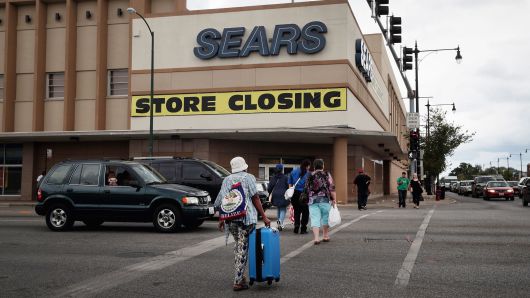Once known as the largest retailer in America, Sears Holding Corporation [NASDAQ: SHLD] filed for bankruptcy last week, after a long wave of excessive borrowing, drastic fall in sales and an inability to compete within the booming e-commerce market.
Founder Richard Sears started the business by selling jewellery. The creativity and successful business model executed by Sears, led to the opening of many retail stores, the first in 1925. Soon after, competitors of the large conglomerate were wiped out of business as Sears provided what the market wanted in one location.
Throughout its lifespan, Sears has made many acquisitions the most notably is K-Mart in 2005. K-Mart grew as quickly as Sears, opening 3,500 stores across the 50 states dominating the retail market.
On October 15, 2018, the 125-year-old company filed a Chapter 11- Business Bankruptcy, with an estimated $1 billion in assets and $10 billion in debt. For years, the company has suffered from record low sales, increase competition and snowballing debt.
The recent announcement by outgoing CEO Edward Lampert states that “…a difficult retail environment, unsatisfactory operating performance, and legacy liabilities…” has impacted the business and resulted in filing for bankruptcy. Some features of the restructuring plan include, Lampert, stepping down as CEO, and 142 stores to close by year-end, with the fate of 250 stores still unknown.
In 2004, a business week story named Lampert “the next Warren Buffet”, however that positive sentiment was short-lived as news spread about poor management practices and limited knowledge of business operations has contributed to the business failure even as he generously injected $1B into the business to keep Sears afloat.
Similar to Sears obliterating many general stores back when it started, the same is happening to the American retailers as competitors like Amazon take over.
Amazon.com Inc [NASDAQ: AMZN] success, comes from Jeff Bezos ability to keep abreast of the shifts from in-store shopping to online shopping and have consistently been adjusting [AMZN’s] business model to accommodate these changes.
The American e-commerce company reported an increase in net income by 1186.3% when compared to the same quarter one year prior. Sears, however, has underperformed in both the S&P 500 and the Retail industry, with a net income -$508m, a 103.2%decrease, when compared to the same quarter last year. The stock’s performance over the last year has fallen by 94.56%.
Chapter 11 is not the dark hole where businesses go to die. There have been successful restructuring as in the case of General Motors [NYSE: GM], who triumphantly exited Chapter 11-Bankruptcy after 40 days.
Regardless of the result, this is a strong warning to businesses and investors alike to pay attention to industry trends? Consumers are no longer following the traditional means of shopping, brick and mortar no longer has the pull and no business is too big to fail.
Who’s next?
Macy [NYSE: M]?
J.C. Penney [NYSE: JCP]?
If you liked this article and want to read other great stories, try our Archives. Also if you are new to investing you can try our Investment Basics Blog.
If you want to start investing with SSL but don’t have the time to monitor the market or to conduct the trades yourself then you can choose one of SSL’s managed Financial Planning products. We offer a variety of products for every type of investor and if you are interested in managing online trades yourself and having complete control over your investment portfolio then you can try SSL’s Brokerage account.
Follow us on Facebook, LinkedIn and Twitter please leave us a review.


